Support this podcast by visiting Jim’s Patreon Page
Chris Nelder is a Manager in the Mobility practice at the Rocky Mountain Institute in Boulder, Colorado, where he heads the EV-grid Integration team. Chris has written about energy and investing for more than a decade. He is the author two books on energy and investing, as well as more than 200 articles on energy in publications such as Nature, Scientific American, Slate, The Atlantic, Quartz, Financial Times, Greentech Media, SmartPlanet, and the Economist Intelligence Unit. In his spare time, he hosts the Energy Transition Show podcast. He enjoys bantering with other energy geeks on Twitter at @chrisnelder.
Direct Download: http://traffic.libsyn.com/kunstlercast/KunstlerCast_302.mp3
New Paintings by JHK 2016 — 2017
Great Winter Reading… JHK’s new book!
“Simply the best novel about the 1960s.”
Read the first chapter here (click) on Patreon
Buy the book at Amazon or click on the cover below
or get autographed copies from Battenkill Books
Now in Paperback !
Only Seven Bucks!
 JHK’s Three-Act Play
JHK’s Three-Act Play
A log mansion in the Adirondack Mountains…
A big family on the run…
A nation in peril…
Other Books by JHK
The World Made By Hand Series:
Book 1: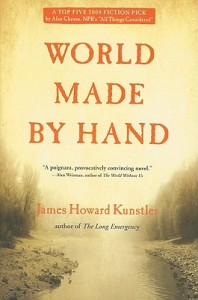 |
Book 2: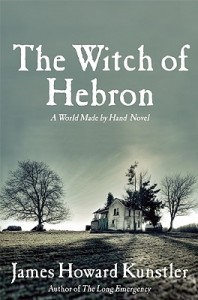 |
  |
  |
Book 3: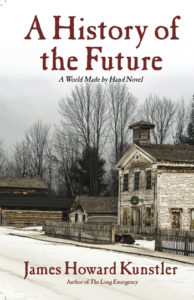 |
Book 4: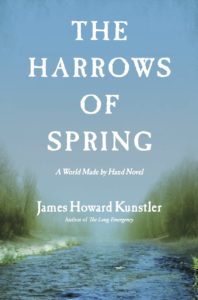 |
  |
  |
 |
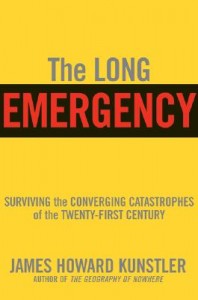 |
  |
  |
Support this blog by visiting Jim’s Patreon Page









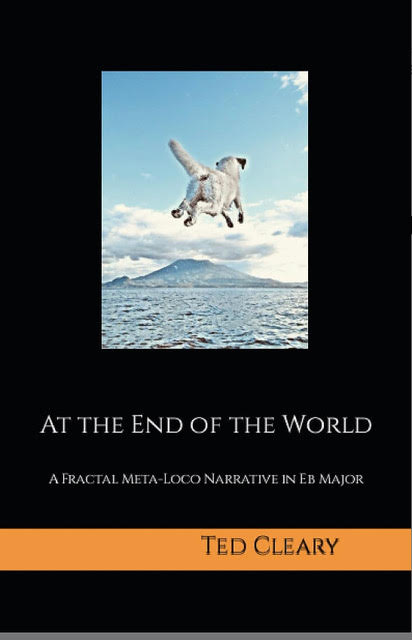




Very good discussion. Should be required listening for everyone on the C-F Nation.
Agreed!
it was very interesting watching and learning how the technologists fool themselves into believing in a magic, future of infinite growth powered by “green” energy.
of course there was no talk about overpopulation or resource depletion. climate destabilization was mentioned, but with rosey predictions about how we can mitigate those problems with increasing complexity and technology.
it is a wonderful, nerdy view which is unfortunately ungrounded from reality… but many people think jeebus will save them too, so i understand how a faith based view can work for some.
I will share a cautionary tale from the winter vortex of 2014. I was a the BOP RO(balance of plant reactor operator) at a nuke plant and the weather was extremely cold. The load dispatcher kept calling me up that night asking me for more MVARS (reactive load). Reactive load is what keeps a grid up. Without it, the grid collapses and you are not moving power around on the grid.
The only way to make reactive load of a power grid is with a synchronous generator/motor. Many old power plants are having the old generators converted into synchronous condensers that will convert a small amount of real power into reactive load. Most if not all wind turbines are incapable of making reactive load to move the power out onto the grid.
The only power plants online during the night of the polar vortex were the nukes and the windmills. The coal plants were offline because the coal piles were frozen solid and they could not feed the furnace. The gas units were offline because the gas pressures were too low to run them because people were burning it in their home furnaces. There was one unit that tripped off that night and that was at Beaver Valley in western PA. They had a transformer malfunction that tripped one of the units.
I can only imagine how many people would have died that night had the nukes not been running. There was a similar event this last January. I no longer work as a RO, but I have friends that still do. Power prices were in excess of $500 per MW-hr and the gas units in southern Ohio were begging for the load dispatcher to let them go offline. They were losing money running the plant because the gas prices were so high. They could not start the units in northern Ohio because the gas pressures were too low.
Wind mills are not a good idea for a power grid. They may make sense for an isolated area or if you are going to feed your own house and battery system. They simply can’t make the reactive power needed to move their power on the grid without some type of synchronous generator.
Lets move on to nukes. I have never heard of a pressurized boiling water reactor. There are only boiling water reactors and pressurized water reactors. Boiling water reactors are fed water from the secondary plant by feed pumps where it is boiled and turned into steam that directly feeds the main turbine. The pressure that these operate at is about 1,000 psia. They operate by raising or lowering flow through the reactor to control reactor power. The way this works is by sweeping the small voids of steam that it makes through the core and allowing more neutrons to moderate and keep power up. The amount of recirculation flow through these cores is much higher than the actual steam flow going to the turbine.
Pressurized water reactors maintain a subcooled reactor coolant system (RCS) by using a pressurizer (PZR). The pressurizer is simply a tank with water and steam in it at saturated conditions that is connected to the RCS. The pressure is controlled by cycling heaters at the bottom of it on/off and spraying water into the top of the PZR from the RCS. These plants operate at about 2200 psia. The RCS water is subcooled and picks up heat as it passes through the core. The hot water is then passed through a steam generator. The steam generator is where the steam is made. It consists of tubes that the RCS flows through and a shell area that is where the secondary water is pumped into and boiled. The two fluids are in separate loops and are not supposed to mix. If they do, that is a SG tube leak and the plant won’t operate for long with that condition.
Thorium reactors are not some theoretical concept. The USA had a thermal thorium breeder reactor at Shippingport, PA near the Beaver Valley nuke plants and the Indians are building them. It did work as a breeder meaning it made more fuel than it consumed. The neutron economy of the reactor was horrible because it used water as the moderator. Water is both a moderator and a poison. If the water consumes too many neutrons, there are not enough left over to both keep the reactor power stable and breeding more fuel.
The way to fix the neutron economy issues of the thermal breeder reactor is to use a molten salt design. We ran these reactors for many years at Oakridge, TN safely. They are many orders of magnatude safer than a light water reactor. The chineese are now pursuing this technology and have been given all the data and design info for these reactors that we ran in the 1960s.
The reason why nukes are so expensive now is because they are a capital intensive way to make power and the regulatory costs. The NRC gets 90% of their budget from fees that they charge to licensees. The hourly rate is about $240 per hour and each nuke plant requires many people to ensure compliance with the regulations. The NRC has at least 2 full time resident inspectors at the site and many more people in the regional offices and headquarters. You can look it up on the NRC ADAMS for yourself. Each nuke plant has to make multi-million dollar payments to the NRC each year.
The regulatory costs can be reduced if the safety factor of a reactor is increased. If a reactor operates at atmospheric pressure with a molten salt coolant, there is no driving force for spewing radioactive contamination out of containment and endangering the public. You could treat these like they were a Catagory 1 source and that would substantially reduce the regulatory burden.
https://www.nrc.gov/reading-rm/basic-ref/glossary/category-of-radioactive-sources.html
My former company recently declared bankruptcy and announced the closure of 4 nuclear reactors over the next 3 years a few weeks ago. Once those plants are shutdown and the license cancellation paper work is sent to the NRC, they will never be able to startup again. It will be interesting to see how well the grid is handled during these extreme cold snaps.
Awfully technical, but very interesting. I’m pretty fond of nuclear power plants, but also pretty fond of wind generators. Aren’t they making lots of electricity in many parts of the country, and the world, that is displacing fossil fuels?
What’s wrong with them in layman’s terms? Why do you say they aren’t good for the power grid?
Thanks for a wonderful and insightful post.
I agree!!!! Build the MOFO or shut up. We need to fix what we can before the music stops.
Black screen death problem occurs in windows 10 very less. If something big is going wrong in the PC then this type of problem you face. Do not worry here is best tutorial windows black screen to get rid with you windows 10 turns black screen problem.